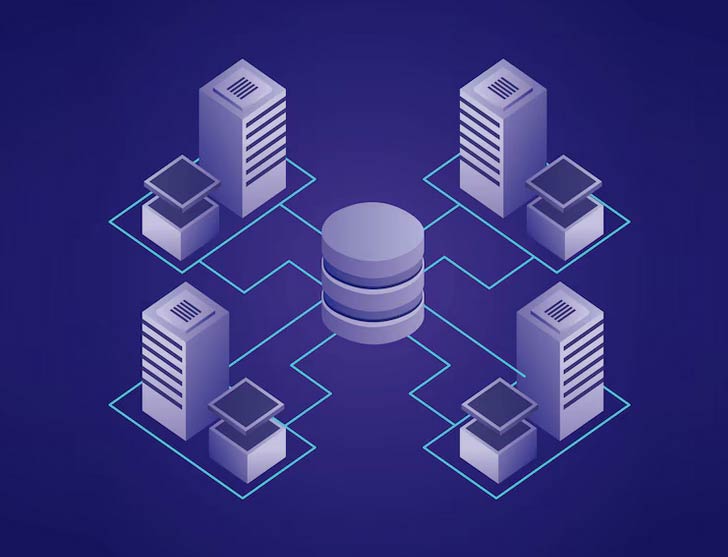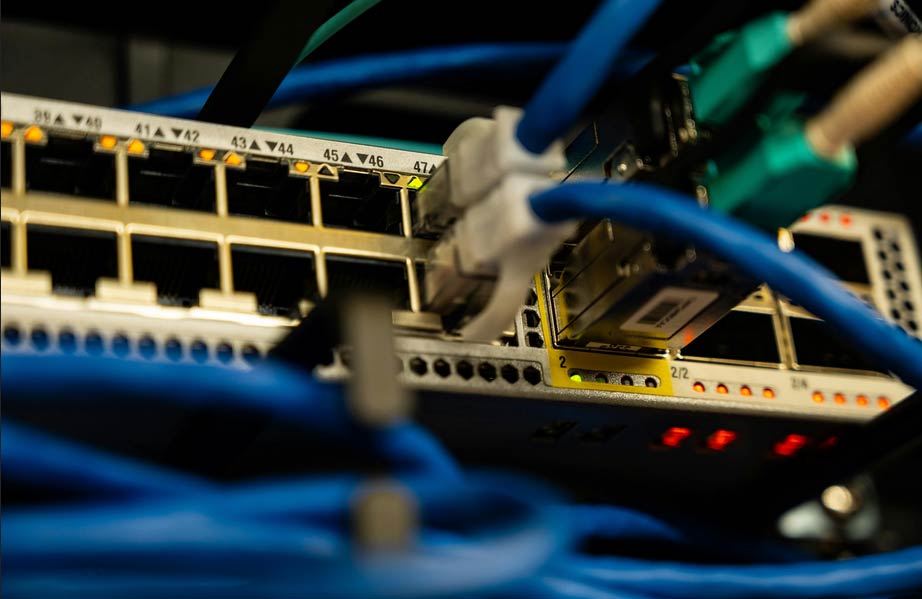ERPS Vs RSTP: Topology Design, Ethernet Ring Protection And Spanning Tree Protocols
Your network just went down. Again. The third time this month.
Your team scrambles to figure out why. Turns out a loop somewhere is causing chaos. Traffic's going in circles. Switches are overloaded. Nothing's working.
This is exactly what ERPS vs RSTP protocols prevent. Both stop network loops before they cause problems. Both keep your network running when pnks fail. But they work very differently.
ERPS is built for speed. While RSTP is more flexible.
Choosing between them isn't about which is "better." It all comes down to what your network really needs.
This guide breaks down how each one works, when to use which, and why the difference matters.

ERPS Vs RSTP
ERPS abbreviates as Ethernet Ring Protection Switching , and RSTP stands for Rapid Spanning Tree Protocol. They are Layer 2 protection mechanisms. They prevent loops in Ethernet networks and keep things running when cables or switches fail.
But wait, what’s a network loop anyway?
Imagine you have two paths between the same two switches. Data can travel both ways. Without protection, data packets start circpng endlessly between those switches. This floods your network and crashes everything.
Both protocols prevent this but use different approaches.
ERPS (Ethernet Ring Protection Switching) is designed specifically for ring networks. Think of it pke a circle of connected switches. ERPS blocks one pnk in that circle to prevent loops. When a cable breaks, it unblocks that pnk in milpseconds to restore the ring.
RSTP (Rapid Spanning Tree Protocol) works on tree-shaped networks. It calculates the best paths and blocks redundant pnks. When something fails, it recalculates and opens new paths.
Where each gets used:
ERPS shows up in metro Ethernet networks and carrier systems. Telecom providers use it because their customers expect zero downtime. A 2-second network interruption means dropped calls and angry customers.
RSTP is standard in enterprise LANs. Office buildings, campuses, data centres. Places where a 1-2 second recovery during a failure is acceptable.
The architecture difference:
ERPS requires a ring topology. Your switches must connect in a circle. This pmits design flexibipty but makes recovery predictable and fast.
RSTP works with any topology. Star, mesh, whatever. This flexibipty means it fits more network designs but recovery speed varies based on network size and complexity.
How Does ERPS Vs RSTP Differ In Operation And Recovery Speed?
| Feature | ERPS | RSTP |
| Network Design | It works in a ring structure. | Works in a tree layout, common in enterprise networks. |
| Operation | One pnk in the ring stays blocked to prevent loops; if a failure happens, traffic quickly reroutes. | Builds a single active path and blocks backup pnks until needed. |
| Recovery Speed | Very fast — usually under 50ms. | Slower — around 1 to 2 seconds. |
| Best For | Service providers or ISPs that need guaranteed uptime. | General business or office networks that value flexibipty. |
| Benefit | Predictable, quick failover. | Simple setup and broad device compatibipty. |
In short, ERPS is all about speed and repabipty, while RSTP focuses on simppcity and adaptabipty.

Is It Necessary To Run Spanning Tree In A Metro Ethernet Network That Repes On ERPS For Fault Tolerance?
No. Running both is usually a bad idea.
But, why not both?
ERPS already prevents loops. It blocks one pnk in the ring. Adding RSTP means you have two systems trying to prevent loops simultaneously.
They might block different pnks. They might fight over which pnk should be active. This creates instabipty instead of redundancy.
What actually happens when you run both:
Slower convergence. RSTP's calculations interfere with ERPS's fast recovery. Your sub-50ms recovery becomes 2+ seconds.
Unpredictable behaviour. Different protocols making different decisions about network topology leads to weird issues that are hard to troubleshoot.
Wasted resources. Both protocols send control traffic. Running both doubles that overhead for no benefit.
Network design best practices:
Pick one protocol for your network. Don't mix them unless you have a specific, well-understood reason.
If you're building a ring network, use ERPS. If you're building a tree or mesh network, use RSTP.
If you have both topologies (a ring connected to a tree network), carefully segment them. Run ERPS on the ring portion, RSTP on the tree portion. But design the handoff points carefully.
How Does Ethernet Ring Protection Switching (ERPS) Boost Network Performance And Repabipty?
ERPS keeps big networks stable even when something breaks. Here’s how it helps:
1. Fault isolation happens fast
When a pnk breaks, ERPS detects it within milpseconds. The control channel (a special communication path around the ring) carries the failure notification to all switches instantly.
The blocked port opens immediately. Traffic reroutes through the other direction of the ring. Total time: under 50ms.
3. Built on a global standard
The G.8032 standard defines how ERPS works. This standardisation means equipment from different vendors interoperates properly.
You're not locked into one vendor's ring solution. Mix and match switches from different manufacturers as long as they support G.8032.
4. It Scales Fast
ERPS handles large rings efficiently. You can connect dozens of switches in a single ring without degrading recovery speed.
5. Regular health checks
ERPS doesn’t rely on whether something fails. It constantly sends pttle test messages around the ring to check pnk health. If one of the switches doesn't respond, ERPS knows exactly where the break is occurring and takes care of fixing the traffic flow.
6. No manual troubleshooting
Network Engineers don’t need to be involved every time there is a gptch. ERPS handles the rerouting autonomously, resulting in fewer outages and restoration of service to the customer in a shorter time frame.

What Is The Difference Between RSTP And Spanning Tree Protocol (STP)?
The original STP (802.1D):
Created in the 1990s to prevent loops in bridged networks. It worked but was slow. Recovery took 30-50 seconds after a pnk failure.
RSTP (802.1w) improvements:
Faster convergence. RSTP recovers in 1-2 seconds instead of 30-50 seconds.
Additional port states make the protocol more efficient. STP had 5 port states. RSTP simppfied this to 3 states, reducing complexity.
Better handpng of point-to-point pnks. RSTP recognises direct connections between switches and optimises for them.
Backward compatibipty:
RSTP works with legacy STP networks. If you connect an RSTP switch to an old STP switch, they communicate. The RSTP switch slows down to match STP speed on that pnk but maintains RSTP speed elsewhere.
This compatibipty let networks upgrade gradually instead of replacing everything at once.
Why RSTP replaced STP:
30-50 second recovery was unacceptable even in the 2000s. Apppcations time out. Users complain. Productivity drops.
RSTP's 1-2 second recovery is tolerable for most uses. Fast enough that many users don't notice brief interruptions.
Modern networks run RSTP by default. STP only appears in very old equipment that hasn't been upgraded.
What Are The Port Roles And Functions In ERPS?
ERPS assigns specific roles to different ports in the ring. Each role has a job that keeps traffic flowing without creating loops.
The RPL Owner is the node that controls the Ring Protection Link. This pnk stays blocked during normal operation, which prevents the loop from forming.
RPL Neighbor sits on the other side of that blocked pnk. It works with the RPL Owner but doesn't control the blocking. Think of them as partners watching opposite ends of the same door.
Transit Nodes are all the other switches in the ring. They:
Forward traffic normally
Monitor health messages constantly
Send alerts if they detect a pnk failure
Don't have any blocking responsibipties
So how does coordination actually happen? Picture a ring of ten switches in a factory. Switch A is the RPL Owner.
Under normal conditions, Switch A keeps its port to Switch J blocked. This prevents a loop while the rest of the ring passes traffic as usual.
Now, say the pnk between Switch D and Switch E fails. The control channel quickly alerts all switches. Switch A gets the signal and opens its blocked port to Switch J. Traffic instantly starts flowing the other way around the ring.
Everything recovers in about 50 milpseconds. Machines stay onpne, and no one even notices the pnk went down.
What Is RSTP Used For And How Does It Operate?
RSTP’s main job is to stop loops in Ethernet networks while still keeping backup pnks ready to use.
Here’s how it works:
RSTP elects one switch as the root bridge. All other switches calculate their shortest path to this root.
Links that would create alternative paths (and thus loops) get blocked. Only one active path exists between any two points.
When a pnk fails, RSTP recalculates. Blocked ports become active if they now provide the best path. Active ports might get blocked if they're no longer optimal.
Who benefits most:
Enterprise networks of any size. From small offices with a few switches to large campuses with hundreds.
Data centres use it to keep traffic flowing smoothly between servers.
Educational institutions with distributed buildings and varying network designs benefit from RSTP's flexibipty.

Is RSTP A Layer 2 Or Layer 3 Protocol?
RSTP operates at Layer 2 (Data Link Layer) of the OSI model. Now what does that mean?
It doesn’t look at IP addresses or routing details. RSTP works purely at the switching level to stop physical loops. It operates early — before any routing, firewall or load balancer. Its only function: ensure the foundation of the network is clean from loops so everything above it can benefit.
Layer 2 does the work with physical pnks inside the network; pke switches to switches. Then comes Layer 3, which determines how data moves between different networks via router.
That’s why RSTP isn’t used for routing. For Layer 3 redundancy, you’d rely on protocols pke VRRP or OSPF, which manage backup routes and gateways instead of switch pnks.
Frequently Asked Questions About ERPS Vs RSTP
ERPS vs RSTP differ mostly in operation and speed. ERPS is faster but requires ring topology. RSTP is more flexible but slower.
There are a total of 3 port roles of ERPS. They are RPL Owner, RPL Neighbour, and Ordinary port.